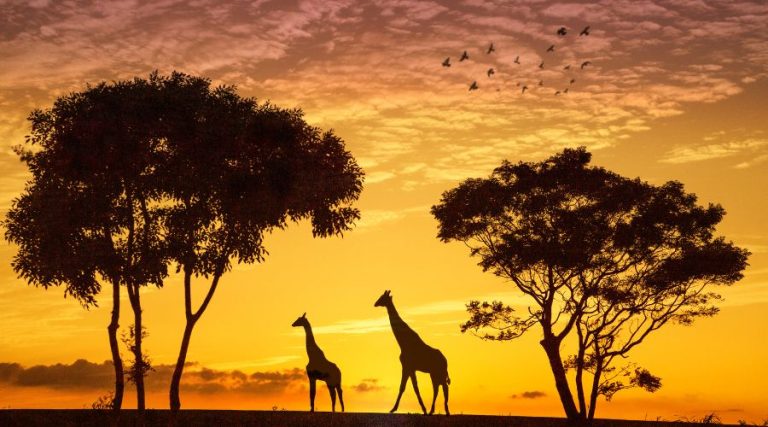Is Alaska a Desert? Exploring the State’s Climate and Landscape
Alaska is known for its rugged terrain, snow-capped mountains, and icy glaciers. However, there is a lesser-known aspect of Alaska that may surprise many people: it is home to a desert. That’s right, Alaska has a desert, and it’s not your typical desert.

The Great Kobuk Sand Dunes, located about 35 miles above the Arctic Circle, are the largest active sand dunes in the Arctic Polar Desert. They are part of Kobuk Valley National Park and are remnants of an Ice Age past. Despite being located in the Arctic, the dunes are home to diverse wildlife and plants.
The climate of Alaska is generally cold and wet, but the Great Kobuk Sand Dunes area is an exception. The region is classified as a polar desert, with little snowfall and sparse vegetation. The sand dunes, which were formed some 14,000 years ago, are constantly shifting due to the strong winds that blow through the area. So, is Alaska a desert? Technically, yes, but it’s not your typical desert.
Defining Alaska’s Climate and Landscape

Alaska is a vast and diverse state, with a climate that varies wildly by region and season. It is the largest state in the United States, located in the far north of North America, with borders shared with Canada to the east and Russia to the west. The state is located entirely within the Arctic Circle, which means that it experiences long, dark winters and short, bright summers.
Climate Zones and Weather Patterns
Alaska’s climate is determined by average temperatures and precipitation received statewide over many years. Depending on latitude, elevation, or a location adjacent to sea or inland, a multitude of very different climate zones are predominant. The state’s climate is changing at a rapid pace, with temperatures rising faster than anywhere else in the United States.
Unique Geological Features
Alaska is known for its unique geological features, including tundra, polar desert, rock, and glaciers. One of the most unique features is the Great Kobuk Sand Dunes, located in Kobuk Valley National Park. These are the largest active sand dunes in the Arctic, covering an area of 25 square miles. The park also contains a variety of other geological features, including sandstone cliffs, volcanic cones, and permafrost.
Flora and Fauna
Alaska’s vegetation is scarce due to its harsh climate, but it is home to a variety of wildlife, including caribou, moose, wolves, foxes, and bears. The state is also home to a variety of bird species, including bald eagles and puffins. The wildlife in Alaska is unique and diverse, with many species adapted to survive in the harsh conditions of the Arctic.
In conclusion, Alaska’s climate and landscape are unique and diverse, with a variety of climate zones, geological features, and wildlife. The state is home to some of the most extreme weather patterns in the world, including long, dark winters and short, bright summers. Despite its harsh climate, Alaska is a beautiful and fascinating place, with a rich history and culture.
Comparing Alaska to Typical Desert Environments

Alaska vs. Traditional Deserts
When most people think of deserts, they imagine a vast expanse of golden sand dunes, scorching heat, and a lack of water. However, Alaska’s desert environment is quite different. Unlike traditional deserts, the Arctic Polar Desert in Alaska is characterized by its cold temperatures, sparse vegetation, and low precipitation.
The Arctic Polar Desert is the largest desert in the world, covering over 5.5 million square miles. It is home to the Western Arctic Caribou herd, one of the largest caribou herds in the world. The landscape is dominated by tundra vegetation, which consists of low-lying shrubs, mosses, and lichens. The soil is often frozen, and the permafrost layer can be as deep as 1,500 feet in some areas.
Despite the differences, there are some similarities between Alaska’s desert environment and traditional deserts. For example, both environments are shaped by wind and water erosion. In Alaska, the wind is a major force, shaping the sand dunes in the Kobuk Valley National Park. Additionally, both environments have limited water resources, which can make it difficult for plants and animals to survive.
Human and Cultural Impact
Alaska’s desert environment has been home to indigenous people for thousands of years. The Aleut people have lived in the region for over 9,000 years, and the Inupiaq people have lived in the region for over 4,000 years. These people have developed unique cultures and traditions that are tied to the land and its resources.
Today, Alaska’s desert environment is used for a variety of purposes, including hunting, fishing, and camping. The region is home to several national parks, including Kobuk Valley National Park, which is home to the largest sand dunes in the Arctic. The park is a popular destination for tourists and outdoor enthusiasts, who come to hike, camp, and explore the unique landscape.
In addition to recreation, the region is also home to several mining operations. Gold mining has been a major industry in Alaska since the late 1800s, and several mining camps, such as Nome and Kotzebue, have been established in the region. These mining operations have had a significant impact on the environment, including the sediment and water quality of nearby rivers and lakes.
Overall, while Alaska’s desert environment may be different from traditional deserts, it is still a unique and important ecosystem that is home to a variety of plant and animal species. Its cultural and natural resources are important to both the indigenous people who have lived in the region for thousands of years and to the visitors who come to explore and appreciate its beauty.
Frequently Asked Questions

What defines a region as a desert?
A desert is defined as a region that receives less than 10 inches of precipitation annually. Deserts are characterized by their arid climate, with little to no vegetation, and extreme temperatures.
How does the climate in Alaska compare to typical desert climates?
The climate in Alaska is vastly different from typical desert climates. While some regions of Alaska can be considered deserts due to their low rainfall and cold temperatures, the state as a whole is not classified as a desert.
What are the characteristics of a polar desert?
A polar desert is a type of desert that is characterized by its extremely cold temperatures and low precipitation. These regions are often covered in ice and snow, with little vegetation and wildlife.
Where is the Kobuk Sand Dunes located?
The Kobuk Sand Dunes are located in the Arctic Circle, within Kobuk Valley National Park in Alaska.
Does Alaska have any areas classified as deserts?
Yes, some parts of Alaska can be considered desert-like due to their low rainfall and cold temperatures. However, the state as a whole is not classified as a desert.
What is the average temperature range in the Arctic desert?
The average temperature range in the Arctic desert is between -30 to 20 degrees Fahrenheit, with temperatures often dropping below freezing.






